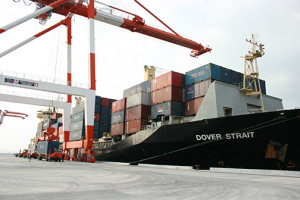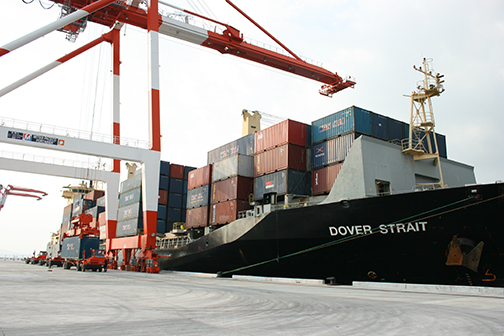 Japanese shipping firm NYK Line is looking at opening a Singapore-Subic route, even as other liners are considering launching their own Subic connections, according to Subic Bay Metropolitan Authority (SBMA) chairman Roberto Garcia.
Japanese shipping firm NYK Line is looking at opening a Singapore-Subic route, even as other liners are considering launching their own Subic connections, according to Subic Bay Metropolitan Authority (SBMA) chairman Roberto Garcia.
Garcia in a statement revealed that besides NYK Line’s plans, there are also reports about a proposed Shanghai-Subic route, which will open a direct China connection instead of passing through Kaohsiung, Taiwan.
In addition, one carrier, an intra-Asia liner, is answering the Subic call by mounting a Xiamen-Manila-Subic-Japan-Xiamen service this month, meeting shippers’ need for China and Japan connections, he said.
Earlier, Garcia told PortCalls that the Subic Bay Maritime Technical Working Group (TWG), composed of representatives from government agencies and the private sector, is identifying ports that could be directly linked to Subic, including Singapore, China, and Japan.
Garcia, who was a speaker at the recent Northern Luzon Shipping Summit in Fontana Clark, Pampanga, said the SBMA’s long-term plan is to build enough volume to attract direct calls to Subic to bring down costs and improve turnaround time.
“Subic is really lucky because we are the only port on the Western seaboard of the Philippines that has the capacity at this point in time,” Garcia said.
“Manila is congested. Batangas is congested. I hope we get congested soon, but that will be a happy problem,” Garcia pointed out.
”Things are looking good for Subic as far as that’s concerned.”
Preparing for higher tonnage
Moreover, he expects the arrival soon of vessels that are being diverted from Manila following Subic’s designation as its extension port.
“We’ve been informed that within the next two weeks or so, there will be ships that will be coming to unload and use Subic as an extension port,” Garcia said.
He added that this development is expected to raise Subic’s container port intake from 38,000 twenty-foot-equivalent units last year to 70,000 TEUs this year.
While this will bolster Subic port’s revenues, Garcia emphasized the importance of ensuring the port does not get congested “just like what happened to Batangas.”
He said the Batangas congestion problem led Toyota (Philippines) to unload its shipment in Subic because its ship could not berth in Batangas, then had its cargo containers driven back all the way to Sta. Rosa, Laguna.
“I don’t want the same thing to happen to Subic, so we need to be very efficient with the inflow and outflow of containers,” Garcia said.
He also stressed that Subic has to prepare for heavier cargo traffic because of reports that it is not only the Port of Manila that is congested, but other major Asian ports as well, such as Shanghai, Hong Kong, and Singapore.
“This is going to have a ripple effect,” Garcia said.
Traffic summit
To prepare for the volume expansion, SBMA plans to host a consultation meeting with shipping firms and other port-related businesses to discuss measures to avoid congestion and ensure efficient traffic flow of container trucks in the Subic Bay Freeport.
The talks will be conducted when SBMA hosts a traffic summit with operators and drivers of cargo-hauling companies, truckers’ groups, the Bureau of Customs, and the Subic Bay International Terminal Corp., which operates Subic’s New Container Terminals 1 and 2. — Roumina Pablo
Photo courtesy of Subic Bay International Terminal Corp





